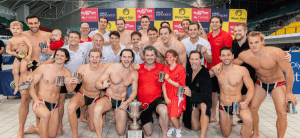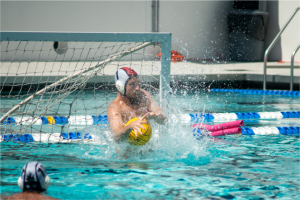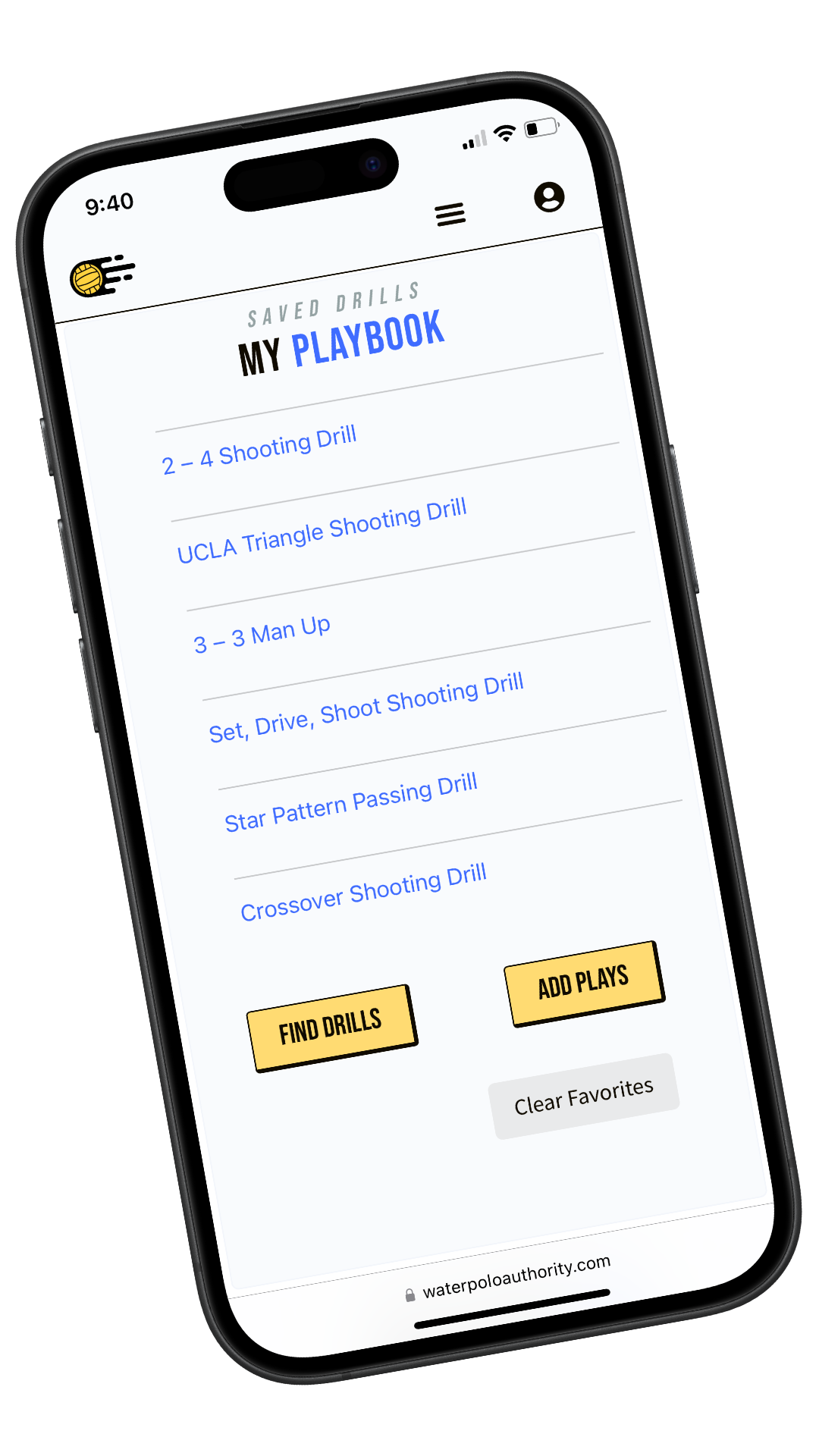Water polo teams typically maintain a roster of around 13 players, with 7 players in the pool for each team during a match. Players commonly specialize in specific positions based on their individual skills, physical attributes such as size and speed, and their dominant throwing hand. As a dynamic sport, water polo players need to be able to play multiple positions on both offense and defense throughout the game.
What’s covered in this article:
- Common Names of Positions
- Numbering System
- Man Up (6-on-5) Positions
- Defense Positions
- Responsibilities at Each Position
How many positions are there in water polo?
There are seven positions in water polo: left wing, left driver, right wing, right driver, hole set, hole D, and goalie. During a match, players play both offense and defense, quickly transitioning between roles. This makes water polo a competitive, dynamic, and strategic team sport that requires players to possess a wide range of skills, including swimming, passing, shooting, guarding, field blocking, and vigilant game awareness.
What are the water polo positions called?
Wings: The wing players occupy positions on the sides of the pool, getting as close to the 2 meter line as possible. By moving closer to the goal line, these players can create scoring opportunities by making passes to the hole set or to the drivers.
Drivers: Drivers are positioned 5-6 meters away from the goal typically in line with the goal posts. Their main objective is to help facilitate the offense by making strategic passes to the hole set or wings, swimming to new positions to create movement, or taking outside shots on the goal.
Flats: Another term for drivers, flats position themselves along the 5-6 meter line to be in a good shooting position.
Hole Set: The hole set lines up 2 meters in front of the goal directly in the center of the cage. One of the main objectives a water polo offense is to pass the ball to the hole set. This position has one of the highest chances of scoring a goal or earning an ejection, resulting in a power play opportunity.
Hole D: The hole D, or center defense, guards the hole set. While on defense, the hold D wrestles with the hole set for position, trying to prevent entry passes by positioning their body and arms between the hole set and perimeter players. On offense the hold D plays at the top of the key (also known as ‘point’), facilitates passes, and can take outside shots on the goal.
Goalie: The last line of defense. The goalie in water polo is allowed to use two hands to block, catch, or save incoming shots. Water polo goalkeepers exhibit exceptional reflexes, agility, and shot-stopping abilities to keep the opposition from scoring.
Utility: Versatile players can play multiple positions and are seen as utility players. These players can drive while on offense to create movement and post up players as if playing the hole set position. With their skill and versatility, utility players are often changing between wing, driver, and hole set positions.
Understanding the Water Polo Positions
Water polo positions are numbered to signify their position in the pool. This numbering systems helps coaches and athletes quickly understand where they need to be and what their roles are.
What are the water polo position numbers?
Players typically setup in an umbrella format while on offense, surrounding the hole set in a semi-circle shape. These are the water polo positions on a regular six-on-six offensive setup.
- Left Side Wing
- Left Side Driver
- Hole D/Center Defense/Point
- Right Side Driver
- Right Side Wing
- Hole Set/Center Forward
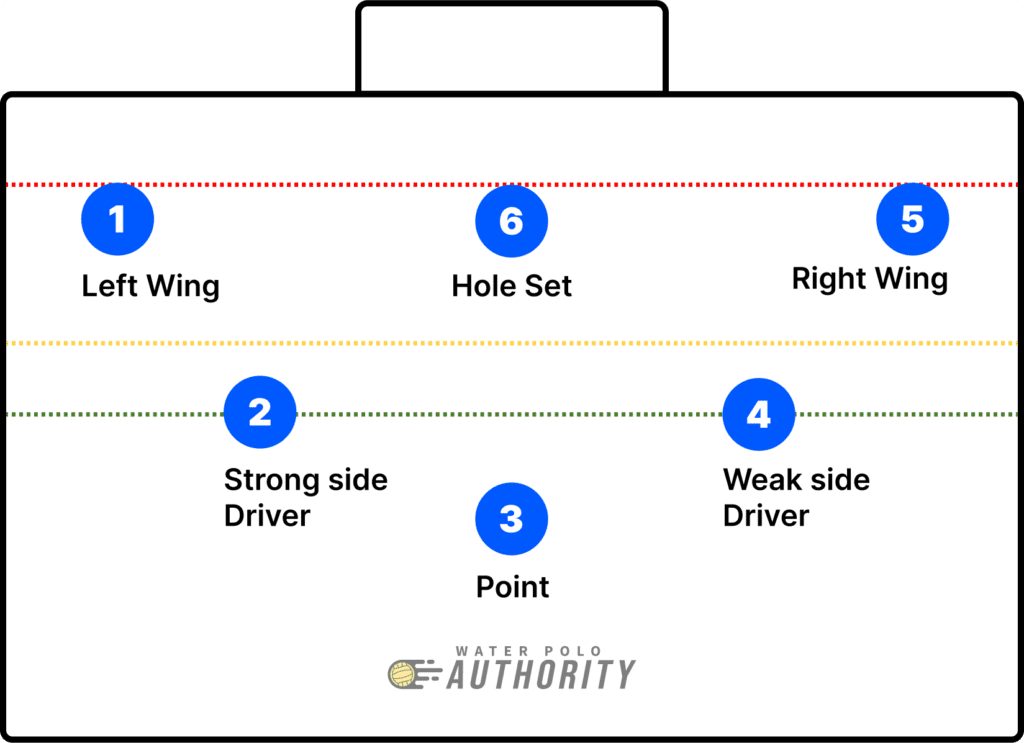
What are the water polo positions on man up?
The water polo position names and numbers change when a defensive player is temporarily excluded and the offense is on a power play, or man up possession. This format is known as a 4-2, with four players along the 2 meter line and two players along the 6 meter line. Players quickly transition to these positions when there is an exclusion. Coaches and athletes typically refer to these positions by their numbers and general area in the formation.
- Strong Side Wing
- Two Post
- Three Post
- Top
- Top
- Weak Side Wing
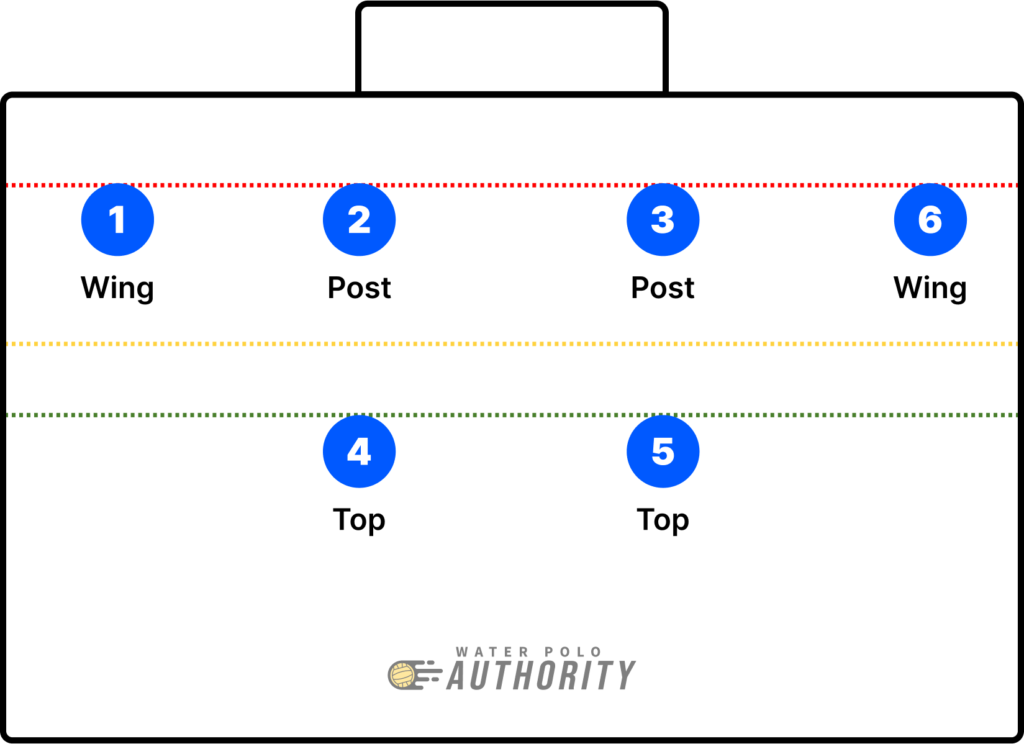
What are the defense positions in water polo?
Positions on defense are more fluid and less defined than on offense. The main skill position is the center defender, or hole D. This player guards the offense’s main threat, the hole set. Center defenders work to prevent entry passes by spinning and wrestling for position with the hole set. They can try to prevent shots by shot blocking and pushing the hole set out of position, but are often excluded for impeding the hole set from scoring.
The rest of the players guard around the perimeter, shot blocking, fouling, and applying pressure to the offense. Teams often employ different defensive strategies that involve dropping back help to cover the hole set, pressing out to apply pressure to perimeter players, or a mix of the two. Learn more water polo defensive strategies here.
The last line of defense in water polo is the goalie. Denoted by their red caps, goalies are allowed to use both hands to block the ball. This position requires a considerable amount of leg strength as goalies are repeatedly lunging and jumping to block incoming shots.
Water Polo Position Roles and Responsibilities
What is weak side in water polo?
Weak typically refers to the side of the pool opposite the ball. If the ball is on the left side of the pool, players may direct the ball to the ‘weak side’ by passing it to the right side.
In water polo, the term “weak side” can also refer to the positions on the right side of the pool, namely the right/weak side driver and right/weak side wing, particularly because most players are predominantly right-handed. This designation is important because left-handed players typically occupy these positions, using their natural advantage of better shooting angles from the right side of the pool, thanks to the point of release on the left side of their body.
Read the water polo terms glossary for more information on specific terms.
What is a flat in water polo?
Flats are players positioned above the wings near the 5-6 meter line. These players try to get into optimal outside shooting position to score.
What is a driver in water polo?
Drivers are typically fast players that drive through the offense to create movement and goal scoring opportunities.
What does a wing do in water polo?
The main objective of the wing position is to swim down to the 2 meter line and get open to receive a pass. Wings are in great position to make entry passes to the hole set, which can often result in an exclusion or kick out. By getting the ball to the wings the entire offense is able to move closer to the goal for better scoring chances. When drivers swim through to create movement on offense the wing players then need to rotate up into the driver position.
